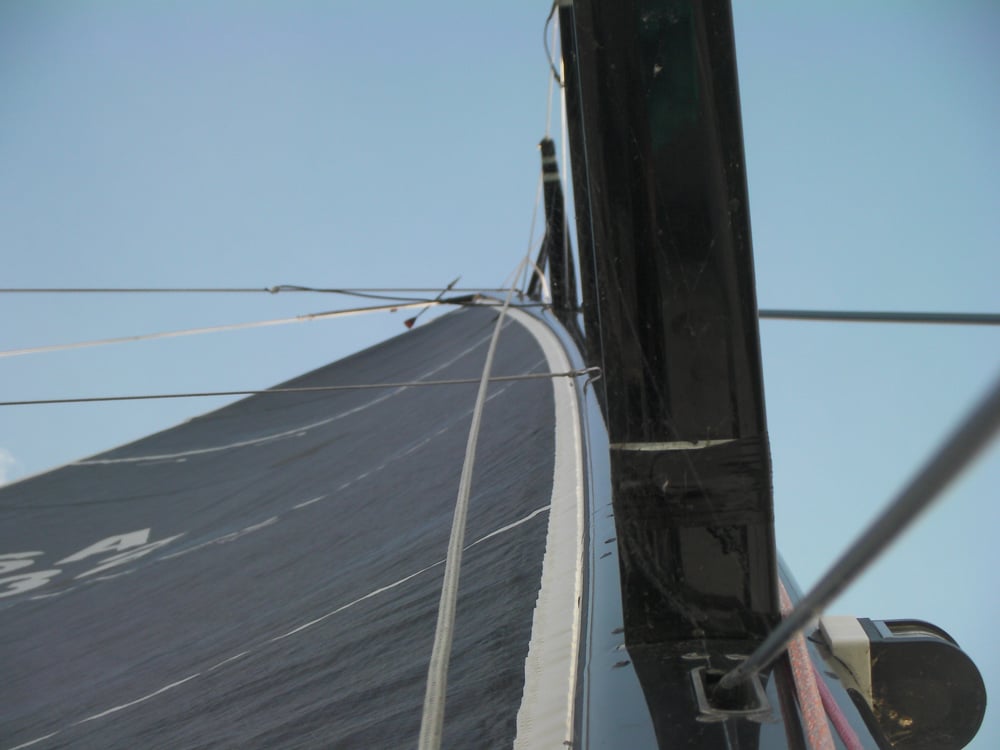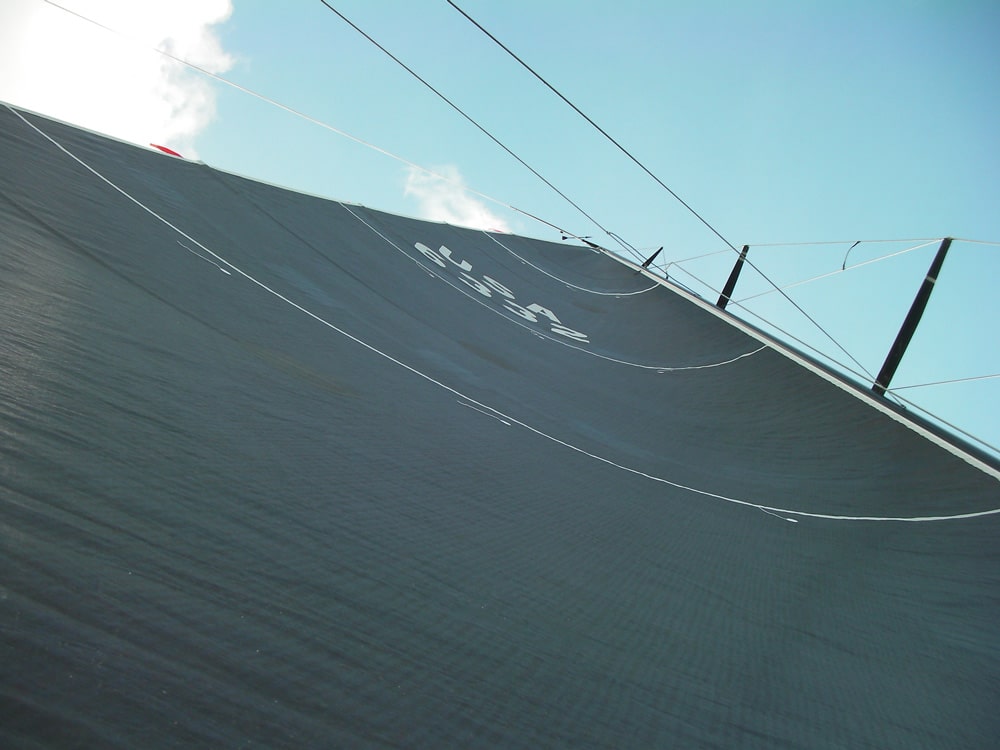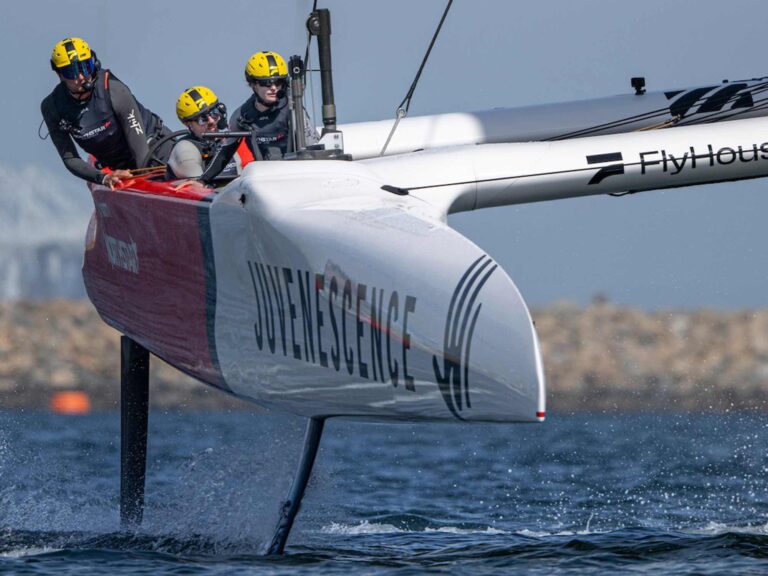
A few years ago, I was helping a friend find a good boat for beer can racing on Lake Erie. His criteria were simple—a relatively big cockpit, easy to sail but challenging to set up well, and priced so that he could keep the cooler full all summer. There were a bunch of candidates. One of the discards caught my attention, as it would fill a void in my personal sailing. I wanted a boat to sail with family and friends, one that fit the PHRF fleet in my area but was tweaky above the rails. I ended up with a late 1990s one-off three-quarter tonner designed by Nelson/Marek. With a complex rig—runners, checkstays, multiple spreaders and even jumper shrouds, permanent backstay—it’s quite the opposite of today’s non-runner, non-overlapping headsail rigs. But I was in sail-tweaker heaven.
Even though not a lot of boats today carry the rig adjustments this boat has, taking a look at how they affect mainsail shape can inform how we look at sail shape on just about any boat. For instance, what happens to mainsail shape when the lower part of the mast is too straight? What if you have excessive over-bend wrinkles in the lower section of the mainsail? What if you have too deep of a mainsail and/or my telltales always stall? What if you have excessive speed bump, which makes it seem like the main is always flogging? These are all key to speed and what the main trimmer needs to understand and address.
On my boat, we have a few adjustments that are constantly in play when we go through the wind ranges. The permanent backstay is really an overall mast bending mechanism. When it is off, the mast is relatively straight. When it is on, it really bends the mast. The running backstays do a little to help bend the mast, but have a larger effect on the forestay tension. I like the ability to tension the forestay on the fly without interrupting the mainsail shape. Need some power, simply ease. Need to tighten for forestay and flatten the entry, crank it up! The check stays are the fine-tuner to mast bend and typically only get attention when the mast is bending too much (either through mainsheet tension or a combination of Running backstay and permanent backstay).
Permanent Backstay
Just like any boat, the looser you run the backstay, the more powered up the mainsail becomes. We don’t pull on the permanent backstay until we really need to twist open the top of the sail to depower without letting out the mainsail. This allows the main trimmer to focus on the top of the sail and use the backstay and main trim to get the top batten parallel to the boom. When the time comes to pull on the permanent backstay, we have to be really careful because the rig is super-bendy and we can really kill speed by inverting the mainsail, which makes the mainsail appear as if it has absolutely no shape—like you strung a sheet to the mast/boom and all it does is flag with the breeze.
Running Backstays
Running backstays allow you to tension the forestay without disturbing the mainsail set up. It is cool to be able to do this, but it requires a dedicated crew to adjust when in straight line and to “tack” the runners. To say we are active on the runners on our home waters of Lake Erie, would be an understatement. In fact, though we don’t have a load cell, we have been very careful to always know the runner-tension range. Too loose and the forestay becomes too soft and bouncy; too tight and you run the risk of having giving the headsail too flat of an entry and making the sail too flat. In the mainsail, the runner induces some bend through compression. The check stay then addresses the low bend, should we need to carry the runner tight.
For more modern designs, like the J/70, you can envision the uppers working similar to the running backstays because of the large spreader sweep and aft-sitting chainplates. There is a correlation between the tensions of the shrouds and the forestay. The tighter you tension the caps, the tighter the forestay. The difference, however, is that with tension, you are pushing the spreaders into the mast and forcing more mast bend. Tighter lowers will pull the mast back to take bend out. Consult your tuning guide to study this correlation.

Check Stays
The check stays are positioned between the runner and the gooseneck, and when tensioned, they straighten the mast, which creates a rounder mainsail entry. A rounder entry makes the sail look good, and this is great when you need power. Be careful, though, not to create too round of an entry, as it will disturb the flow in the slot between the mainsail and the genoa. Also, checks that are too tight create a mainsail shape that is too “back end loaded” with too much hook or return on the leech section. This creates a tight leech on the mainsail, forcing the trimmer to ease and thus affecting the upwind boatspeed with a looser trimmed sail, and point by releasing too much vertical tension on the aft part of the mainsail.
On the flip-side, if the checks are too soft, the mast will bend too much, making the mainsail too flat. Like the description above, you risk the mainsail shape becoming inverted and without structure or shape. I really like having the ability to play the check stays because if your mast and sail are not correctly matched, you might see some of the problems the check stays work to fix. These are easily the most active controls in the whole backstay system.
The ideal situation on this boat is to have someone in the runner station with their hand on the check stay. When we get a puff, they ease the check stay to bend the mast down low and open the leech. When we need power, they pull on the check to straighten the mast and give some punch to the mainsail.
All of this requires good communication between the runner position, main trimmer and driver. Typically, on our boat, as the driver I communicate how I want the mainsail set up. From there, the main trimmer is in the hot seat to make sure that the sheet tension and traveler position are optimal to balance the helm. If the trimmer struggles to find the settings and the trim groove is simply too tight, he’ll suggest an adjustment to the runner/permanent/check to find the sweet spot. Once set up so that the helm is balanced and the range of trim is minimized, the runner trimmer/position then goes right to the check stay to balance the boat, especially if the wind is inconsistent. If the setup is good, they’ll both turn around and hike while I trim the traveler from the driver’s position.









